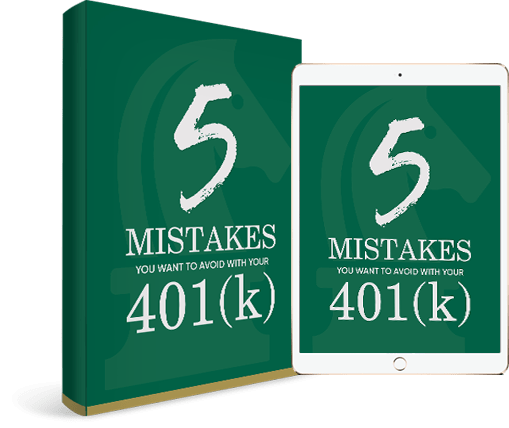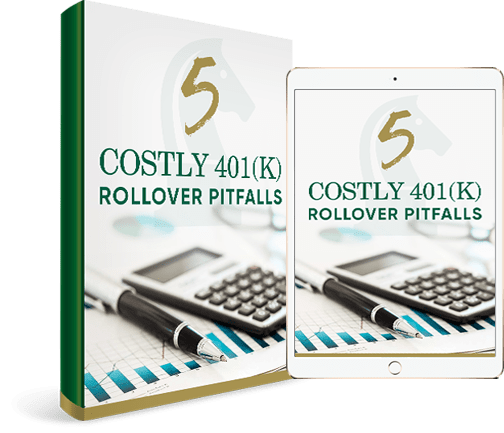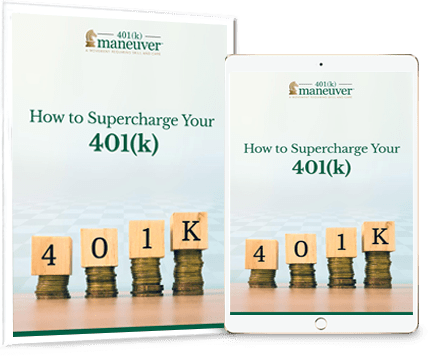
Avoid These 4 Irreversible and Costly 401(k) Rollover Mistakes
It’s important to know the irreversible and costly 401k rollover mistakes if you want the greatest potential of money in retirement.
If you have recently changed to a new employer or you left that job years ago, it’s likely you have some 401(k) retirement savings that accumulated while at your former job.
Regardless of how much your 401(k) balance is, it’s important for your financial future to decide on what you’re going to do with it moving forward.
Namely, do you leave it where it is, or do you roll over your account to your new employer’s retirement plan or to an Individual Retirement Account (IRA)?
Before you make your move, it’s important to know the irreversible and costly 401(k) rollover mistakes.
Educating yourself before you do anything is the best way to safeguard your money and hard-earned retirement savings from unnecessary penalties and taxes.
Keep reading for our top costly 401(k) rollover mistakes to avoid…
Rollover Mistake #1: Leaving an Old 401(k) Behind with Past Employer

If you leave an employer and also leave a 401(k) behind, don’t assume your past employer is taking care of it for you.
This belief is all too common among 401(k) investors. And it’s one of the biggest misconceptions about 401(k)s that people have…
One that’s potentially costing investors more retirement income and may prevent them from reaching their retirement income goals.
Whether you have one 401(k) account you left with a past employer, or have two or three of them, leaving them behind may result in overlapping funds that may not suit your tolerance for risk.
While you may be able to leave your 401(k) account with your previous employer, there are several disadvantages to doing so:
- Your account will remain subject to plan rules.
- You will continue to have limited investment options.
- You will have another account to keep up with.
A better option would be to roll your old 401(k) into your new employer’s 401(k) plan, providing it’s allowed, or roll it into an IRA.
There are potential advantages to rolling over your old 401(k) into an IRA:
- You can consolidate more than one 401(k) account into an IRA.
- With the right advisor, you have virtually unlimited investment options and more control over the account.
- Tax withholding is not required if you need a distribution.
- You have more control over naming or changing your beneficiaries.
To avoid costly 401(k) rollover mistakes, we recommend seeking expert third-party advice.
Download our no-cost guide on how to understand The Different Types of Licenses Financial Advisors Have and What They Mean to You.
Rollover Mistake #2: Rolling Over Your 401(k) Funds Indirectly

It’s important to understand the two types of rollovers: direct and indirect. To avoid costly 401(k)
Direct Rollover: When you transfer your money from one retirement account directly into another. With a direct rollover into your new employer’s 401(k) plan or into your IRA, you never touch the money and no money is withheld for taxes.
Indirect Rollover: When your 401(k) account funds are given to you via check for deposit into a personal account, with the intention of reinvesting those funds into a new retirement account within 60 days or less.
Indirect rollovers come with stipulations and penalties:
- Your company will automatically withhold 20% for income taxes for indirect rollovers, and then send you the remaining funds via check. You must deposit those funds into a new IRA within 60 days; otherwise, you’ll have to pay penalties.
- If you deposit the money into a new IRA within the 60-day grace period, you still have to come up with the 20% that was withheld for taxes.
- In most cases, if you are 59½ and you do an indirect rollover, you will also have to pay a 10% early withdrawal penalty if you go longer than the 60-day period.
- The IRS only allows one indirect rollover in a 12-month period.
- You cannot split the transfer among multiple accounts. The transfer must come from one account to another account.
Most financial and tax advisors recommend investors opt for the direct rollover option to avoid withholding taxes and potential penalties.
Rollover Mistake #3: Rolling Over Your 401(k) Too Soon

Rolling over your 401(k) account into an IRA too soon may be a costly 401(k) rollover mistake.
If you plan to retire before age 59½, taking money out of an IRA will result in regular income tax on your withdrawals and an additional 10% IRS early withdrawal penalty.
However, if you leave your money inside your 401(k) plan, you may be able to take advantage of the “over 55 rule.”
This rule states that if you are 55 or over in the calendar year you leave your job, you can take penalty-free withdrawals from that employer’s 401(k) plan.
You will still have to pay taxes on the withdrawals, but you’ll avoid paying penalties.
Rollover Mistake #4: Rolling Over Company Stock

You need to be careful when rolling over your 401(k) if it contains shares of your former employer’s stock that has appreciated over the years.
In fact, in some cases, rolling over the stock into an IRA could be a costly mistake.
Typically, 401(k) plan distributions are subject to ordinary income taxes.
However, there is a special rule that applies when you receive a tax distribution of employer stock from your plan.
This rule is referred to as the Net Unrealized Appreciation, or NUA, rule.
You would only pay ordinary income tax on the cost basis of the stock.
The cost basis is the stock price at the time that it was purchased for you by the plan. Any appreciation in the stock will receive more favorable long-term capital gains treatment.
The NUA rule does not apply if you roll over the stock to an IRA.
To take advantage of NUA rules, it has to be done as part of a full and final rollover from an employer plan.
Click here to download our no-cost guide: The Different Types of Licenses Financial Advisors Have and What They Mean to You .









